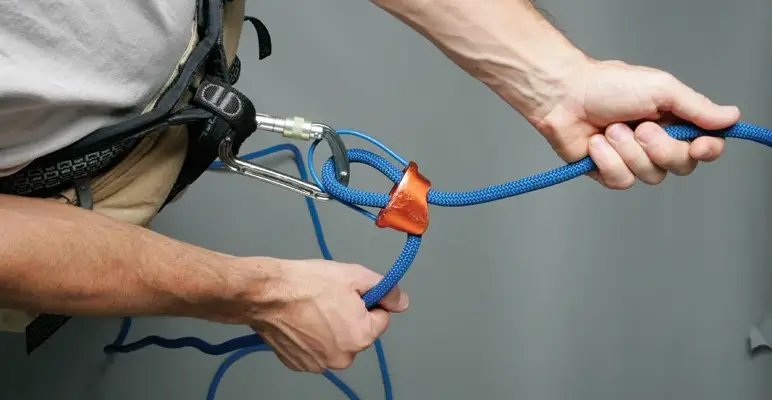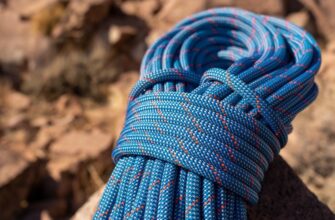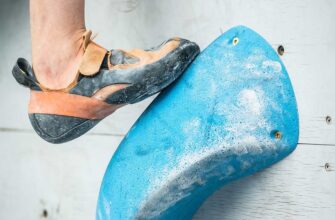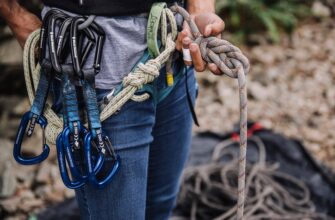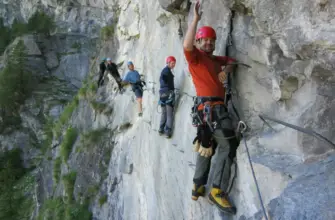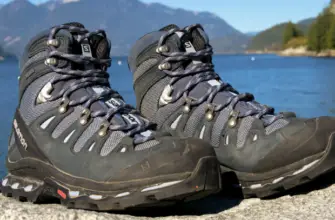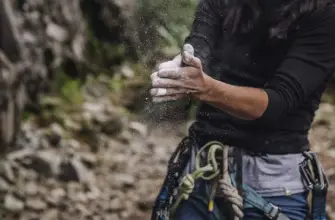One of the equipment items in the bag of every climber is a good climbing rope, which unquestionably saves the lives of thousands of mountaineers. The ropes on the modern market are made of tight and sturdy materials, resistant to extreme temperatures, but to prevent unwanted incidents, it is crucial to know how to prevent your climbing rope from deterioration.

- Unboxing a new rope
- Always check up on your rope
- Coiling your rope for the greater good
- How do you store a climbing rope at home?
- How to prevent your climbing rope from deterioration?
- Can you store climbing rope hanging?
- The rope needs a bath time too!
- How long can a climbing rope be stored?
- Fixing the rope in case it rips
- How to cut a rope when it’s damaged?
- Conquest of high peaks begins with small slopes
Unboxing a new rope
As soon as you purchase a new rope, you have to check it up for defects – look for cracks, patches, or spots that look suspicious. After approving the rope’s appearance, untangle the rope following the manufacturer’s instructions.

Once you figure out how to tie and untie the rope, it will be ready to serve you faithfully for any type of climbing – rock climbing, indoor climbing, or even top roping. Make sure to buy the right types of ropes and thoroughly plan on how to store climbing rope.
Always check up on your rope
Whenever we are back from the mountains, we usually leave our climbing ropes in a bag. However, it’s incredibly harmful on a rope: when the climbing rope is very wet – as happens when we are pulling it in the snow – the bacteria or mildew can grow inside the bag. These cells can rip through the sheaths of the rope and completely destroy the rope’s fibers.

Even with stranded ropes that are dry, the possibility of tangling ropes stuck in a bag may surprise you. To store the ropes, you need to take out your ropes from the rope bag and leave them in a dark, dry place with no direct sunlight (UV rays).
Don’t be lazy to inspect your belay devices occasionally. Lacking attention to the ropes, most climbers and endangered by potentially fatal damage.

Coiling your rope for the greater good
After every climbing session, the climbing rope has to be coiled and folded properly. Correctly coiled rope will prevent your gear from the occurrence of little cracks and future kinking.
You have to coil the entire rope – in this way, it is easily transported and can be operatively set up for the next climbing outing.
To help you keep coiled rope, you may purchase rope bags. They serve to store climbing rope and avoid tangling and kinking.
How do you store a climbing rope at home?
One of the most crucial rules of storing the ropes – is to keep them away from any substances. Domestic cleaning products, gasoline, or any other chemically reactive substances are extremely dangerous! It may leave no traces at the first sight, but the durability of a climbing rope may be highly decreased; therefore, there might be a huge chance of tragic consequences.

Put away all the sharp objects from the rope – there is always a danger of keeping them near the gear! Put the rope bag away from the sharp edges to protect your life in future climbs.
How to prevent your climbing rope from deterioration?
Some of the manufacturers provide information on how to store climbing rope immediately after purchasing it, but to make it all clear, here are some common instructions that may help you to operate it.

To store climbing rope properly, it is important to create a few storage conditions, where the rope won’t be exposed to deformation.
The rope undoubtfully should be stored properly – factors, such as sunlight, temperature, or moisture negatively affect the rope’s lifespan.
Keep the equipment in a cool place with a low moisture level – the rope has to be dry-treated. Avoid places, where sudden temperature changes are possible. Garages or basements are not the correct storage places for the rope. Instead, put the rope into a closet or a wardrobe – let the rope become one of your greatest outfits.
The best option for storing the climbing rope is using a specialized rope bag. Those are presented in the stores in a large range, but if you are not a fan of additional expenses, you may use an opaque plastic bag for storing your climbing rope.
Can you store climbing rope hanging?
Putting the rope on a hook may be a great solution to save someplace on the shelves, but don’t try to hang it like a coat.

First, it is essential to coil the rope – this way, weight distribution works for your good. Ideally, you have to put the rope into the rope bag to avoid twisting.
Watch out for your furry friends – a hanging rope bag may look pretty attractive for cats and dogs!
The rope needs a bath time too!
After a short period of time, you may notice dirt appearing on the rope. It’s a friendly reminder to clean the rope, but don’t rush to the washing machine – the rope intends delicate handwashing.

If there are any instructions from the manufacturer about washing the rope – follow them, however, not all of them prefer adding this information to the box.
Do not add any detergent, bleach, or any other chemical substance while cleaning the rope. The chemicals may damage nylon or lead to the occurrence of soft spots.
Pour some warm water into the bucket and rub the entire length of the rope gently through the water. Don’t try to use the shower rod – strong pressure may dismiss the fabric.
After finishing, hang the rope in a shady, cool place and leave it to dry out. Hanging the rope on the sun is a very bad idea since direct sunlight has a damaging effect.
How long can a climbing rope be stored?
After a certain period of time, your climbing rope will become unusable. Do not seek external signs – age usually affects the climbing rope internally.

The manufacturer usually provides proper information on how long you can use and store climbing ropes, but in case you have no idea, there is a table of the average rope’s lifespan:
New/unused – 10-15 years
Monthly usage with proper cleaning and storing – 3-5 years
Bi-weekly usage with proper cleaning and storing – 1-4 years
Frequent usage (weekly or daily) – 1 year, may be used for top roping for another year
Presence of external signs of damage – immediate retirement
Fixing the rope in case it rips
Although it’s pretty dangerous to use a damaged rope, some repairing tips that can help you save the rope.
If a little piece of the rope on the end has visible defects, or you may indicate the core shot, you can simply cut the damaged end.
However, this could be a questionable piece of advice. After removing a part of the rope, the middle mark may change. To highlight the new mark, use a rope-specific marker, which doesn’t contain hazardous chemicals.
How to cut a rope when it’s damaged?
Always remember to stay calm after witnessing the damage to your rope. If a hole appeared close to the end of the rope, cut some length. When cutting the part, keep an eye on the middle of the rope – it’s necessary to indicate the middle properly.

After making measurements, take a sharp blade and make a straight cut, preventing your rope from losing excessive fibers.

To finish the process – carefully hold a lighter and melt the end strands.
Having repaired the rope, check on the whole length of the rope left. Make sure that the gear is usable and absent of damage.
Conquest of high peaks begins with small slopes
Knowing how to store climbing rope is very valuable information for anyone who enjoys climbing. By following these tips, you will save not only your own but possibly other people’s lives. Properly take care of your equipment and conquer any peaks! Wonder how to stretch out climbing shoes, read


